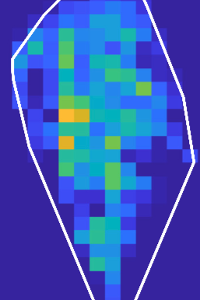Thibaut Bontpart, Cristobal Concha, Mario Valerio Giuffrida, Ingrid Robertson, Kassahun Admkie, Tulu Degefu Abdi, Nigusie Girma Wordofa, Kassahun Tesfaye, Teklehaimanot Haileselassie Teklu, Asnake Fikre Woldemedhin, Masresha Fetene, Sotirios A. Tsaftaris, Peter Doerner
The Plant Journal (2020)
Thibaut Bontpart, Cristobal Concha, Mario Valerio Giuffrida, Ingrid Robertson, Kassahun Admkie, Tulu Degefu Abdi, Nigusie Girma Wordofa, Kassahun Tesfaye, Teklehaimanot Haileselassie Teklu, Asnake Fikre Woldemedhin, Masresha Fetene, Sotirios A. Tsaftaris, Peter Doerner (2020) “Affordable and robust phenotyping framework to analyse root system architecture of soil-grown plants,” The Plant Journal.
Abstract
The phenotypic analysis of root system growth is important to inform efforts to enhance plant resource acquisition from soils. However, root phenotyping still remains challenging due to soil opacity, requiring systems that facilitate root system visibility and image acquisition. Previously reported systems require costly or bespoke materials not available in most countries, where breeders need tools to select varieties best adapted to local soils and field conditions. Here, we report an affordable soil‐based growth (rhizobox) and imaging system to phenotype root development in greenhouses or shelters. All components of the system are made from locally available commodity components, facilitating the adoption of this affordable technology in low‐income countries. The rhizobox is large enough (~6000 cm2 visible soil) to not restrict vertical root system growth for most if not all of the life cycle, yet light enough (∼21 kg when filled with soil) for routine handling. Support structures and an imaging station, with five cameras covering the whole soil surface, complement the rhizoboxes. Images are acquired via the Phenotiki sensor interface, collected, stitched and analysed. Root system architecture (RSA) parameters are quantified without intervention. RSA of a dicot (chickpea, Cicer arietinum L.) and a monocot (barley, Hordeum vulgare L.) species, which exhibit contrasting root systems, were analysed. Insights into root system dynamics during vegetative and reproductive stages of the chickpea lifecycle were obtained. This affordable system is relevant for efforts in Ethiopia and other low‐ and middle‐income countries to sustainably enhance crop yields and climate resilience.


